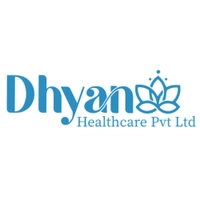Introduction
Childhood is a time of exploration, play, and growth, but it also comes with its share of bumps, bruises, and injuries. As children engage in various activities, they are bound to experience minor mishaps. Understanding common childhood injuries and knowing how to treat them can help parents and caregivers provide the best care for their little ones. At Dhyan Healthcare, we prioritize the health and safety of children. In this blog, we'll discuss some of the most common childhood injuries and provide practical advice on how to treat them.
1. Scrapes and Cuts
Description: Scrapes and cuts are common in active children, often resulting from falls or playing with sharp objects.
Treatment:
- Clean the Wound: Rinse the area with clean water to remove dirt and debris. Use mild soap if necessary.
- Apply Antiseptic: Apply an antiseptic cream or ointment to prevent infection.
- Cover the Wound: Use a sterile bandage or dressing to cover the wound and keep it clean.
- Monitor for Infection: Watch for signs of infection, such as redness, swelling, or pus. Seek medical attention if the wound does not heal or shows signs of infection.
2. Bruises
Description: Bruises occur when small blood vessels under the skin break, causing discoloration and tenderness.
Treatment:
- Rest and Ice: Apply an ice pack to the bruised area for 15-20 minutes to reduce swelling and pain. Repeat as needed for the first 24-48 hours.
- Elevate: If possible, elevate the bruised area to minimize swelling.
- Monitor: Most bruises heal on their own. If the bruise is large, very painful, or does not improve, consult a healthcare professional.
3. Sprains and Strains
Description: Sprains involve stretched or torn ligaments, while strains involve stretched or torn muscles or tendons. These injuries often occur during sports or physical activities.
Treatment:
- Rest: Limit movement and rest the injured area to prevent further damage.
- Ice: Apply an ice pack for 15-20 minutes every 2-3 hours for the first 48 hours.
- Compression: Use an elastic bandage to compress the area and reduce swelling.
- Elevation: Elevate the injured limb to help reduce swelling.
- Seek Medical Advice: If the pain is severe, or if the child cannot use the injured limb, seek medical attention for a proper diagnosis and treatment plan.
4. Fractures
Description: Fractures, or broken bones, can occur from falls, impacts, or accidents. Signs include pain, swelling, and inability to move the affected limb.
Treatment:
- Immobilize: Keep the injured limb still to prevent further damage.
- Seek Medical Attention: Take the child to a healthcare professional immediately. An X-ray may be needed to confirm the fracture.
- Follow Treatment Plan: Treatment may include casting, splinting, or, in severe cases, surgery. Follow the healthcare provider’s instructions for care and follow-up.
5. Head Injuries
Description: Head injuries can range from minor bumps to more serious concussions. Symptoms of a concussion include headache, dizziness, nausea, and confusion.
Treatment:
- Monitor: Observe the child closely for signs of a concussion. If they lose consciousness, vomit, or show unusual behavior, seek medical attention immediately.
- Rest: Ensure the child rests and avoids strenuous activities.
- Consult a Healthcare Professional: If symptoms of a concussion are present, consult a healthcare professional for a thorough evaluation.
Conclusion
Understanding and promptly treating common childhood injuries can help minimize discomfort and promote faster recovery for your child. Always keep a well-stocked first aid kit at home and know when to seek medical attention. At Dhyan Healthcare, we are dedicated to providing comprehensive care and support for children and their families. For more information or to schedule an appointment with our pediatric specialists, please contact us.


